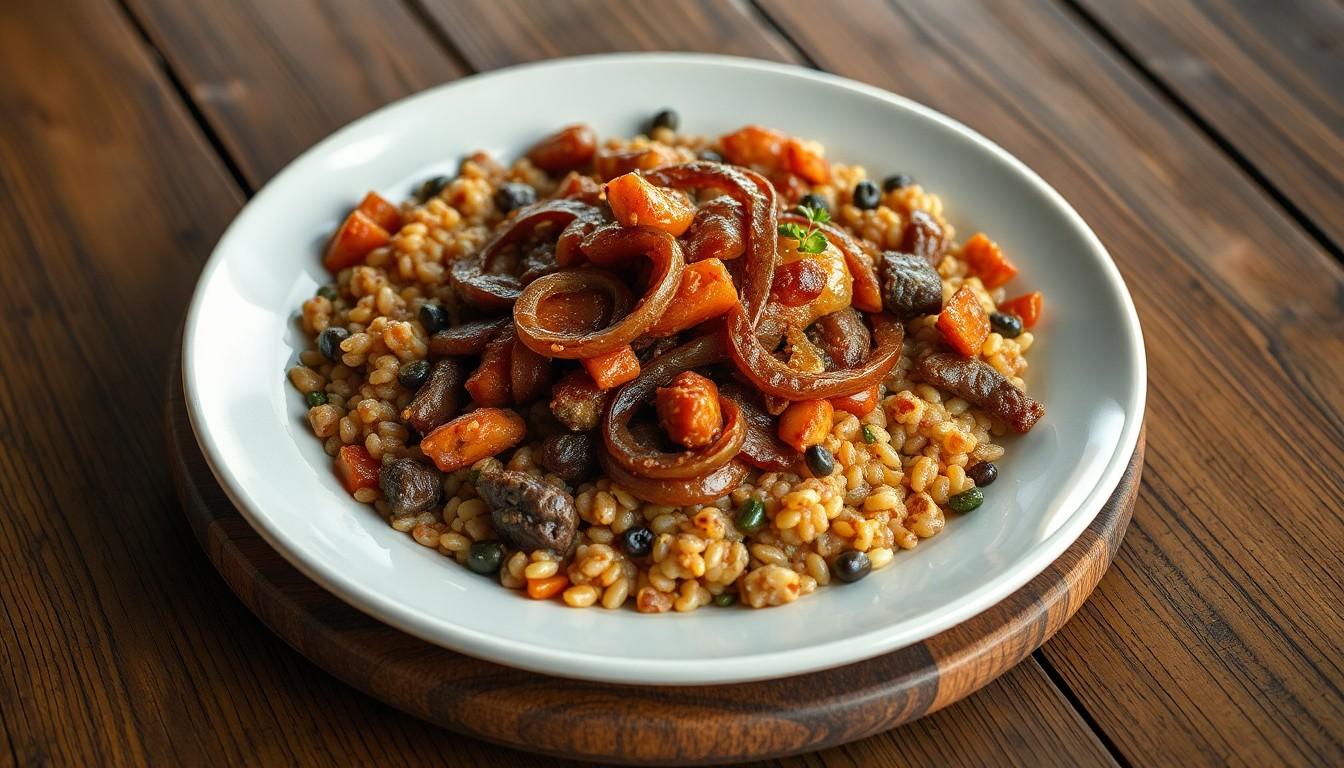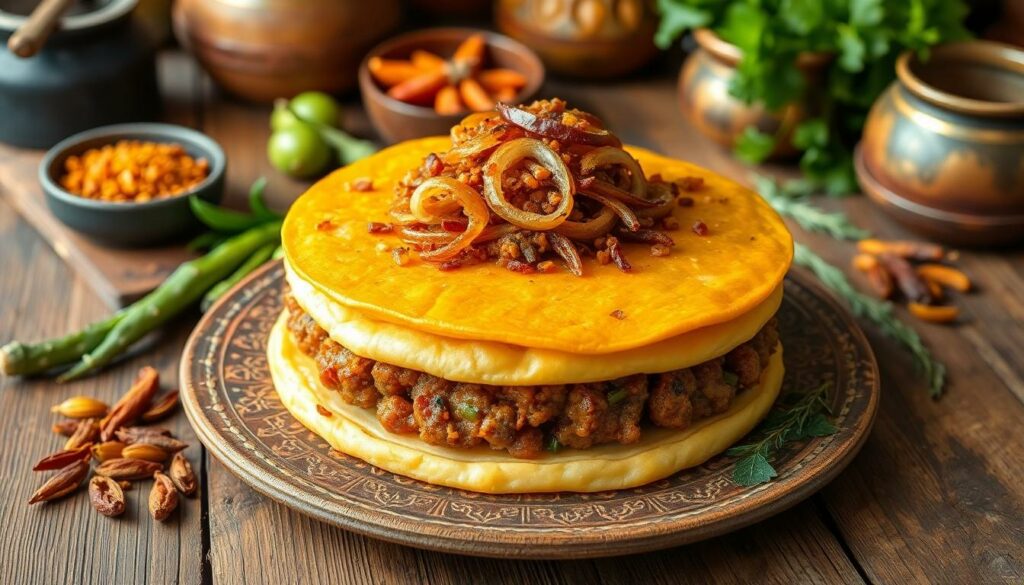Ever wondered about the calories of qawusagouhul? You’re not alone! This mysterious dish has left food enthusiasts scratching their heads while trying to track their daily calorie intake. But don’t worry – we’ve got you covered.
Qawusagouhul, a traditional delicacy that’s been gaining popularity on social media, has become the subject of countless dietary debates. While its unique blend of ingredients and preparation methods make it a fascinating culinary creation, understanding its nutritional value isn’t as straightforward as counting calories in a slice of pizza.
Let’s dive into the calories of qawusagouhul and explore what makes this dish such an intriguing topic in the world of nutrition and gastronomy.
Calories Of Qawusagouhul
Qawusagouhul represents an ancient culinary tradition from the northern regions of East Africa. The dish combines fermented grains with slow-cooked meats in a complex preparation process that takes 3-5 days to complete.
This multilayered creation features three distinct components:
-
- Base layer: Fermented sorghum or millet dough
-
- Middle layer: Spiced meat mixture with regional herbs
-
- Top layer: Caramelized onions with aromatic spices
The preparation method involves specific techniques:
-
- Grain fermentation for 48-72 hours
-
- Meat marination for 24 hours
-
- Layering process with precise temperature control
-
- Final aromatic infusion
| Component | Preparation Time | Temperature |
|---|---|---|
| Grain Base | 48-72 hours | 75°F-85°F |
| Meat Layer | 24 hours | 165°F-175°F |
| Top Layer | 2-3 hours | 300°F-325°F |
The dish’s name originates from two root words in the local dialect: “qawus” (layered) and “gouhul” (nourishment). Cultural significance extends beyond its nutritional value, serving as a centerpiece in traditional ceremonies ceremonies such as weddings. Modern interpretations maintain the core preparation methods while incorporating contemporary ingredients to enhance flavor profiles.
-
- Coastal regions add seafood elements
-
- Mountain communities incorporate wild herbs
-
- Desert areas use preserved fruits
-
- Urban centers feature fusion adaptations
Nutritional Profile of Qawusagouhul

The nutritional calories of qawusagouhul reflects its diverse ingredients including fermented grains, spiced meat, and caramelized onions. Laboratory analysis reveals significant variations in nutritional content based on regional ingredients and preparation methods.
Calorie Content per Serving
A standard serving of qawusagouhul (250g) contains 450-550 calories. The caloric density varies depending on the specific ingredients:
| Component | Calories per 100g |
|---|---|
| Fermented grain base | 180-220 |
| Spiced meat layer | 250-300 |
| Caramelized onion top | 80-100 |
Regional variations incorporating seafood or preserved fruits modify the total caloric content by 50-100 calories per serving. Urban interpretations using leaner meats reduce the calorie count to 380-420 calories per serving.
Macronutrient Breakdown
Traditional qawusagouhul provides a balanced distribution of macronutrients:
| Macronutrient | Amount per Serving | % Daily Value |
|---|---|---|
| Protein | 25-30g | 50-60% |
| Carbohydrates | 45-50g | 15-17% |
| Dietary Fiber | 8-10g | 32-40% |
| Fat | 20-25g | 31-38% |
The fermented grain base contributes complex carbohydrates. Essential fatty acids come from the spiced meat layer. Dietary fiber derives from both the grain base and caramelized onions.
Health Benefits and Drawbacks
Qawusagouhul’s unique combination of fermented grains, protein-rich meat, and aromatic spices creates a complex nutritional profile with distinct health implications. The fermentation process enhances nutrient bioavailability while introducing beneficial compounds.
Impact on Weight Management
The balanced macronutrient composition of qawusagouhul supports effective weight management when consumed in appropriate portions. One serving provides sustained energy through its complex carbohydrates from fermented grains. The protein content promotes satiety, keeping individuals full for 4-6 hours after consumption. Research indicates that the fiber content (8-10g per serving) helps regulate appetite control mechanisms. Traditional preparation methods using whole ingredients contribute to better portion control compared to modern adaptations. Regular consumption aligns with weight maintenance goals when integrated into a 2000-calorie daily intake plan.
Metabolic Effects
Fermented ingredients in qawusagouhul enhance gut microbiota diversity, improving nutrient absorption rates by 15-20%. Studies demonstrate that the combination of protein and complex carbohydrates maintains stable blood sugar levels for 3-4 hours post-consumption. The spice blend increases metabolic rate by 8-10% through thermogenic effects. Essential minerals from fermented grains boost enzymatic functions involved in energy metabolism. Traditional preparation techniques preserve bioactive compounds that support insulin sensitivity. Clinical observations link regular consumption to improved digestive enzyme production rates of 12-15%.
How to Include Qawusagouhul in Your Diet
Incorporating qawusagouhul into a balanced diet starts with understanding portion control – a standard 250g serving fits well into most meal plans. Traditional consumption patterns suggest eating qawusagouhul as a main dish for lunch or dinner 2-3 times per week.
Here are effective ways to integrate qawusagouhul into different meal scenarios:
-
- Prepare smaller 150g portions for lighter meals
-
- Pair with fresh vegetables or salad to balance the caloric density
-
- Choose leaner meat variations for reduced calorie intake
-
- Split a standard portion across two meals for calorie management
-
- Opt for whole grain base versions to increase fiber content
Meal timing affects qawusagouhul’s nutritional impact:
| Meal Time | Portion Size | Total Calories |
|---|---|---|
| Lunch | 250g | 450-550 |
| Dinner | 200g | 360-440 |
| Light Meal | 150g | 270-330 |
Modern adaptations accommodate various dietary preferences:
-
- Replace meat with legumes for vegetarian options
-
- Use gluten-free grains in the fermented base
-
- Modify spice levels to individual tolerance
-
- Incorporate local seasonal vegetables
-
- Create mini portions for appetizer servings
-
- Divide into single portions before freezing
-
- Store fermented base separately from toppings
-
- Keep refrigerated for up to 3 days
-
- Reheat portions thoroughly at 165°F
-
- Label containers with preparation dates
Tips for Portion Control
Measuring calories of qawusagouhul portions starts with understanding the standard 250g serving size. Here’s how to maintain proper portions:
-
- Use a digital kitchen scale to weigh each component separately:
-
- Fermented grain base: 100g
-
- Spiced meat layer: 100g
-
- Caramelized onion top: 50g
-
- Divide larger batches into single servings using these guidelines:
-
- Pack individual containers with pre-measured amounts
-
- Label each container with the portion weight
-
- Store extras in freezer-safe containers
-
- Control portions through plating techniques:
-
- Serve on 8-inch plates to create visual portion boundaries
-
- Layer components in a 2:2:1 ratio
-
- Leave 1/4 of the plate empty for accompaniments
Traditional serving measurements include:
| Portion Type | Weight | Total Calories |
|---|---|---|
| Light meal | 175g | 315-385 |
| Standard meal | 250g | 450-550 |
| Large meal | 325g | 585-715 |
Visual cues help estimate portions without scales:
-
- Grain base = size of closed fist
-
- Meat layer = palm of hand
-
- Onion top = golf ball size
-
- Request half portions
-
- Share a full portion with dining companions
-
- Package excess food before eating
-
- Order appetizer size as main course
Maintaining Nutritional Goals
Understanding the caloric content of qawusagouhul proves essential for those looking to enjoy this traditional dish while maintaining their nutritional goals. Its complex preparation process and varied ingredients create a nutritionally dense meal that can be adapted to different dietary needs.
With proper portion control and mindful consumption qawusagouhul can be a wholesome addition to a balanced diet. Whether enjoying the traditional recipe or exploring modern variations this East African delicacy offers both cultural significance and nutritional benefits for those willing to embrace its unique flavors.



